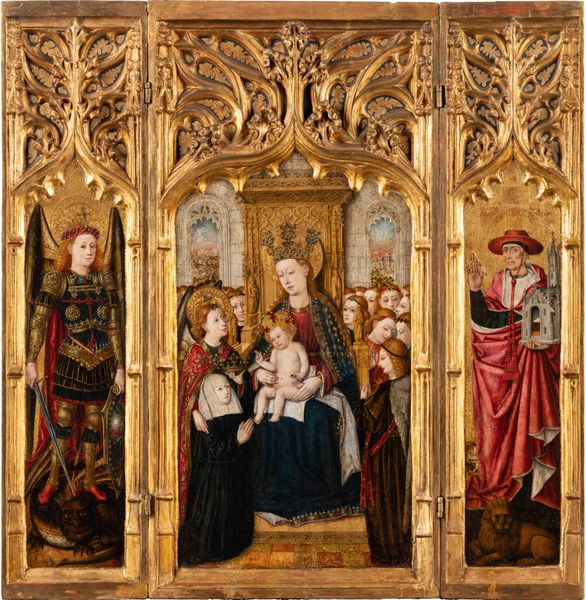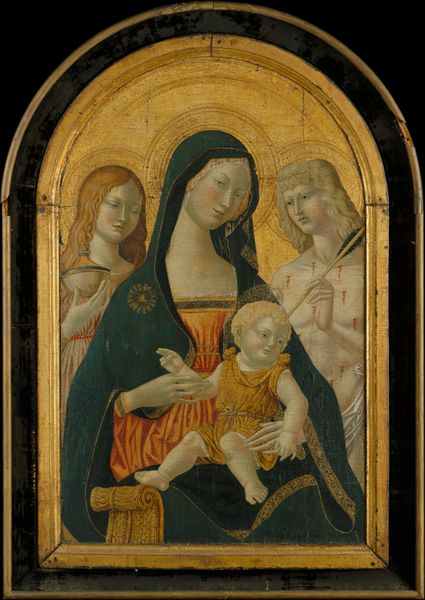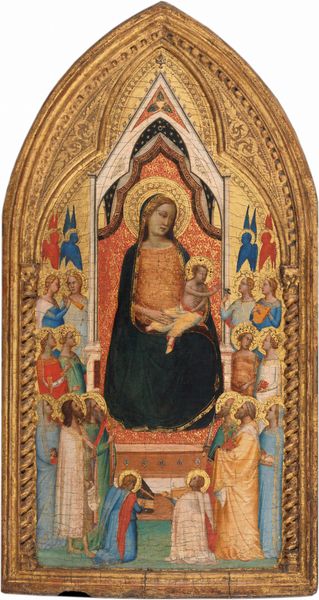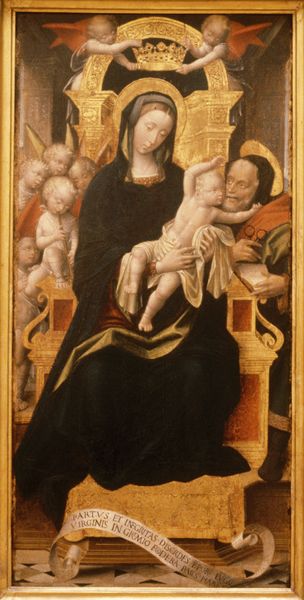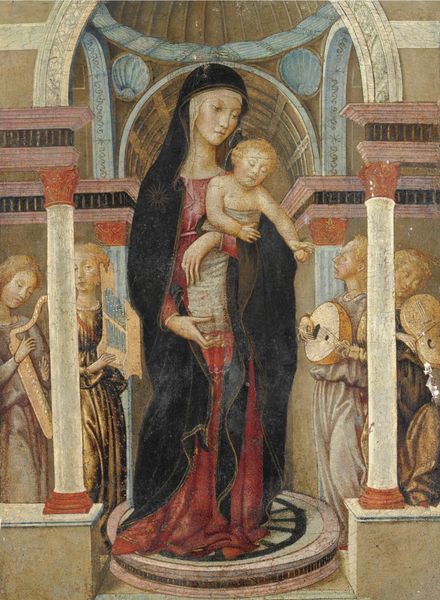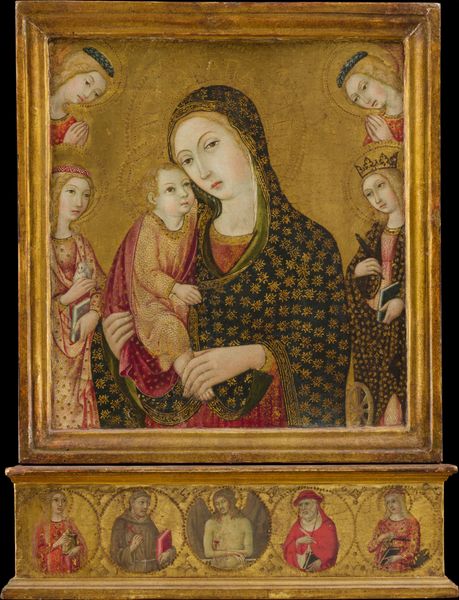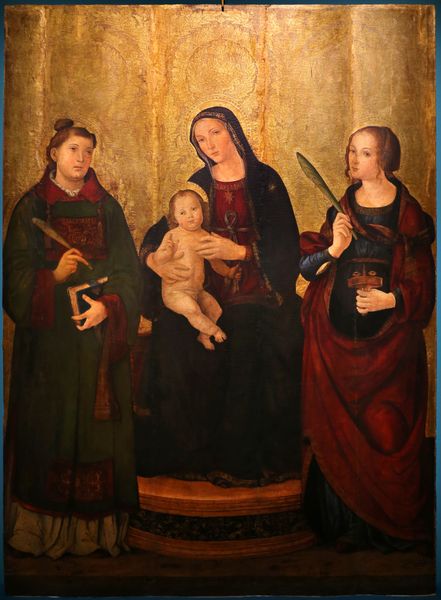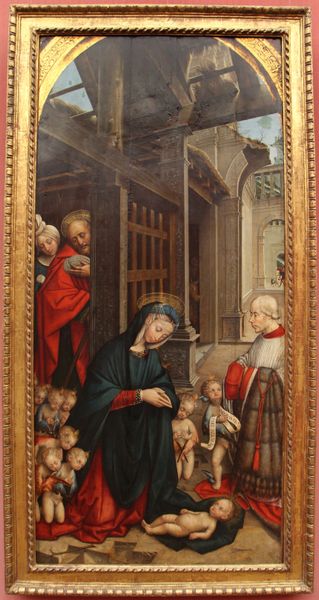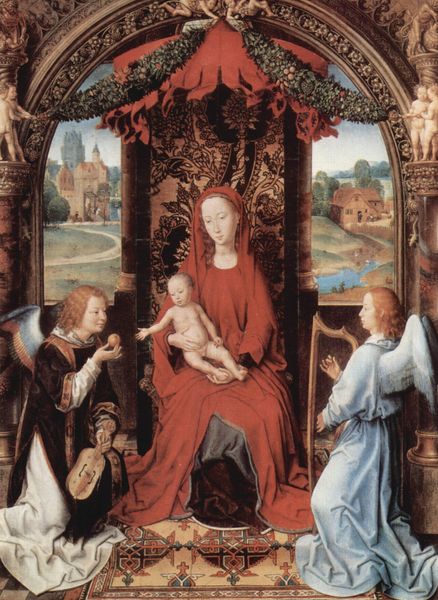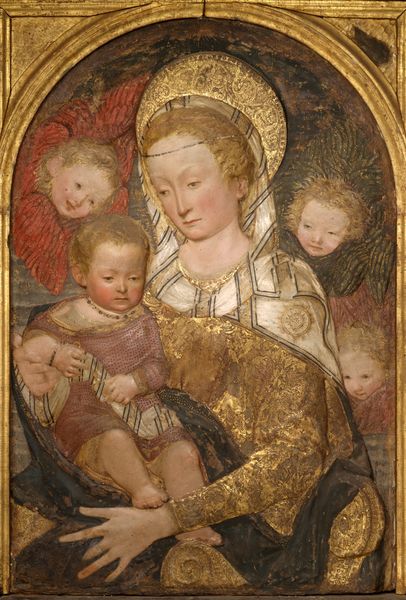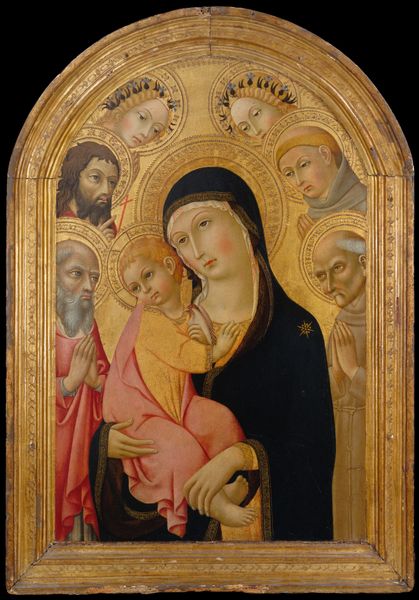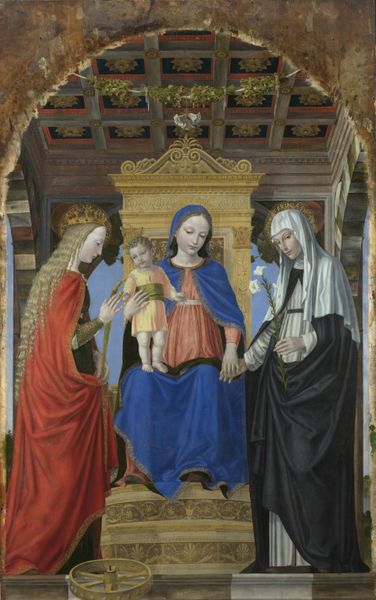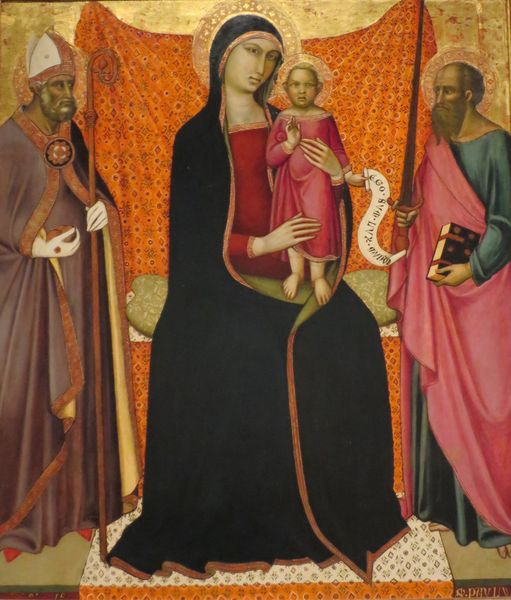
tempera, painting, wood, mural
#
byzantine-art
#
medieval
#
tempera
#
painting
#
figuration
#
oil painting
#
child
#
framed image
#
wood
#
history-painting
#
early-renaissance
#
portrait art
#
mural
#
angel
Dimensions: 80.4 x 39.4 cm
Copyright: Public Domain
Curator: Here we have “Madonna with Child, Angels, and Founder,” a tempera-on-wood piece created circa 1448-1458 by Jacomart. It’s currently held here at the Städel Museum. Editor: The piece strikes me as both radiant and somewhat...crowded. The golden frame is incredibly ornate, and the sheer number of figures tightly packed into the scene creates an almost suffocating sense of piety. Curator: Yes, and that sense of density reflects the socio-political context in which Jacomart was operating. Consider how this artwork functioned within a devotional framework. The founder’s inclusion underscores the role of patronage and its influence on artistic expression in that period. Editor: From a formal perspective, note how Jacomart used hierarchical scale to emphasize the Madonna. She's significantly larger than the surrounding angels and the founder, immediately drawing the eye. The gold leaf, not just in the frame but also in the Madonna's halo and gown, elevates her status further. It almost overwhelms the muted palette used for the other figures. Curator: Absolutely. Gold was frequently utilized to denote the divine in the Early Renaissance, linking power and faith, especially during this tumultuous period of political transition and shifting religious norms. Editor: There is a curious flatness, isn’t there? Even though the architectural setting suggests depth, the figures themselves seem remarkably two-dimensional, arranged almost like a tapestry. This stylistic choice emphasizes the symbolic over realistic representation, moving us beyond observed reality. Curator: And that conscious choice would’ve resonated deeply within the context of contemporaneous devotional art, designed to inspire and convey theological meaning. Jacomart worked at the intersection of royal power, religious faith, and artistic patronage. Editor: In summary, the density of figures, richness of materials, and compositional techniques collectively underscore Jacomart’s talent for fusing artistry with the rigid conventions of faith. Curator: Exactly, we can recognize how Jacomart acted as an intermediary between social forces and spiritual ideologies to address the values of his patrons.
Comments
No comments
Be the first to comment and join the conversation on the ultimate creative platform.
